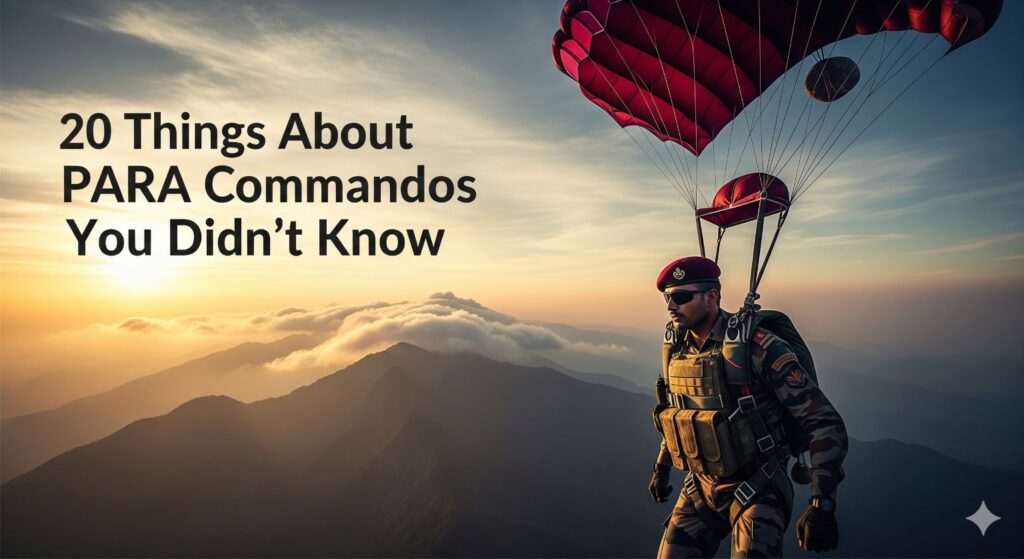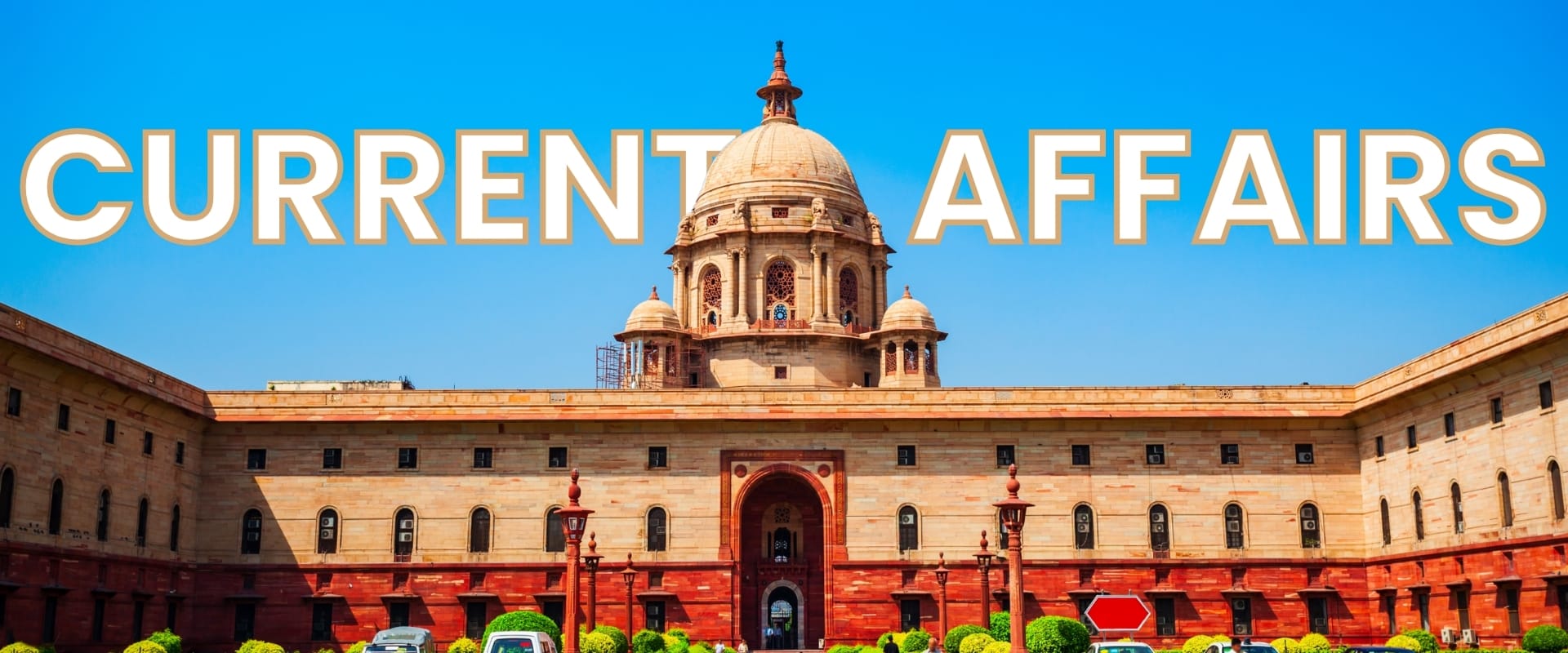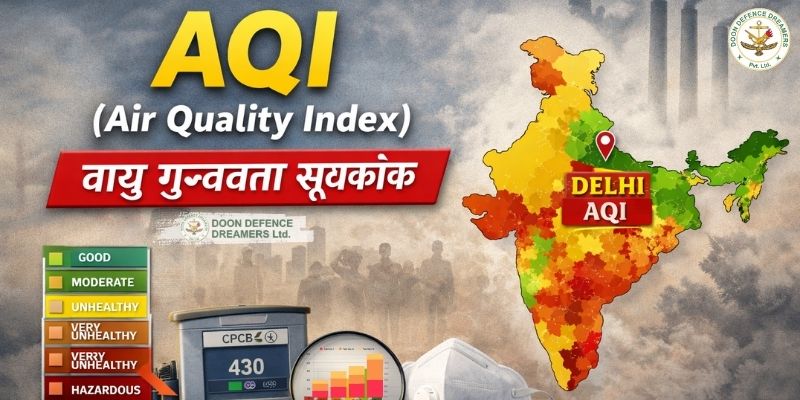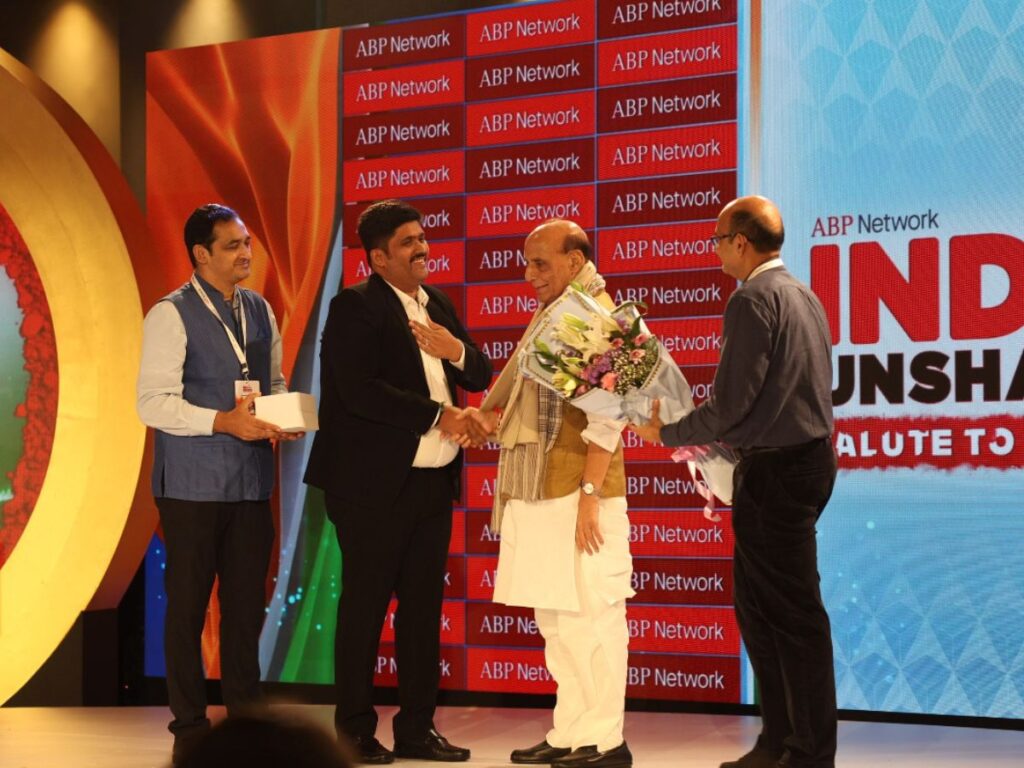India’s para commandos represent the pinnacle of military excellence. These elite warriors go through one of the world’s toughest selection processes. The grueling training eliminates about 80% of candidates, which has earned them tremendous respect from military forces worldwide.
The story of these remarkable soldiers began in October 1941 during World War II with the 50th Parachute Brigade. These elite warriors earned the nickname “Red Devils” from their German African Corps adversaries. Today’s Para Special Forces have grown into 15 battalions. The force consists of 5 airborne units and 10 special forces units. Each unit specializes in critical missions from counter-terrorism to hostage rescue.
The sort of thing I love about these elite warriors deserves a deeper look. Let’s explore 20 remarkable aspects of para commandos, from their intense selection process to their cutting-edge weaponry. These elements showcase why they stand as the finest example of India’s military excellence.
1. Para Commandos are all volunteers
Para commandos follow a unique recruitment path that sets them apart in India’s defense forces. These elite warriors come exclusively from within the ranks of the Indian Army. All Indian paratroopers are volunteers chosen on merit.
No direct recruitment
The para SF commando selection has a distinctive feature – there’s no direct entry route. You cannot simply apply to join these special forces from civilian life. The recruitment process doesn’t have a separate official notification. This approach means only those with proven military experience and dedication can attempt to join this prestigious unit.
A soldier’s path to becoming a “Red Devil” starts with standard army service. Anyone who wants to join the para special forces must first enlist in the Indian Army through conventional channels. Candidates who score at least 50% in the Indian Army Recruitment written exam and achieve 100% in the Physical Test might get the chance to volunteer for these elite forces.
Only serving army personnel
Para commando units build their strength from experienced soldiers. Some join the Parachute regiments right after basic recruitment, while others transfer from regular army units after showing exceptional capabilities. This system means every para SF commando must prove themselves as a capable soldier before they can attempt the tough special forces selection.
Officers need to meet specific criteria before they can volunteer:
- Less than five years of service at the time of application
- Medical category SHAPE-I (highest medical fitness category)
- Graded ‘EXCELLENT’ in Basic Physical Efficiency Test (BPET)
Officers who make it into the para commandos keep their connection with their original Regiment/Corps as their parent regiment. This selective recruitment process helps maintain the exceptional quality and reputation of India’s para special forces. Only the most committed and capable soldiers can join their ranks.
2. The selection process is brutal
A para commando’s experience starts with one of the toughest selection processes in the military world. Candidates face intense physical and mental trials that challenge human endurance limits during selection periods held twice a year in spring and autumn.
3-month probation
Aspiring para SF commandos who volunteer must go through a tough three-month probation phase. This phase ranks among the world’s hardest military tests. The candidates must overcome increasingly difficult challenges including:
- Living without food for 4 days straight
- Getting by with just 1 liter of water for 3 days
- Working without sleep for 7 days
- Completing speed marches of 10-40 kilometers with full battle gear
The original phase tests physical fitness, navigation abilities, and specialized skills. Probationers must show expertise in blindfolded team assembly, demolition, communication, medical procedures, and survival skills. Two notorious tests await candidates as they progress: a 100 km endurance run with 17 kg of equipment that takes 13-15 hours, and a brutal 36-hour stress test that begins with a 10 km speed march while carrying 30 kg battle loads.
80% dropout rate
The para commando selection maintains a remarkably high failure rate. About 80-90% of candidates fail to complete the process. Some batches see even higher dropout rates—reaching 90-95%.
Most candidates choose to quit on their own. A training officer explains it best: “During the 6-month probation period, no candidate gets rejected because 90% of candidates give up by themselves and return to their respective units”. This natural selection process will give a unit of determined individuals who earn their place in the para SF commando ranks, creating what they call “men apart, every man an emperor”.
3. They train at PTS Agra
The Paratroopers Training School (PTS) in Agra, Uttar Pradesh stands at the core of para commando training. This 75-year-old institution started as the Air Landing School at Willingdon Airport in New Delhi back in 1941. After India’s partition, it found its home in Agra. Today, this prestigious facility turns regular soldiers into airborne warriors.
5 jumps including night jump
Para SF commando trainees face their next big test at PTS Agra after completing their tough probation period – the Para basic course. Each aspiring para commando must complete 5 parachute jumps successfully during this intense training. One of these jumps happens at night with full battle load, which tests their limits.
Students start with static line jumps where the parachute opens automatically as they leave the aircraft. They move on to more advanced operations as their skills improve. Some trainees perform freefall jumps that need extra skill and control.
Earning the maroon beret
PTS Agra training reaches its peak moment for para commando hopefuls. These elite soldiers receive two special honors after completing all their jumps – the Para Wings and the iconic maroon beret.
The maroon beret serves as a powerful symbol around the world. People instantly recognize its wearer as a member of India’s airborne forces. Soldiers need exceptional discipline and mental strength to earn this headgear. This achievement marks just the start of the trip for para SF commandos.
PTS Agra trains other special forces too, including Garud Commandos, MARCOS, and NSG. MS Dhoni, who holds an honorary rank of Lt Col in the 106 PARA TA battalion, went through training here. He became a qualified paratrooper after completing his five jumps in 2015.
4. Para SF Commando training is next level
Para SF commandos take their training to the next level after becoming skilled at basic airborne operations. These elite warriors face specialized challenges that go way beyond earning the maroon beret. Their training aims to develop extraordinary capabilities.
Combat diving
The Naval Diving School in Kochi trains para commandos in amphibious warfare. They learn underwater combat techniques that are vital to covert maritime operations. Their aquatic training pushes conventional boundaries. These warriors conducted joint diving operations with Naval MARCOS at an incredible height of 17,000 ft in Sikkim. The exercise tested their skills in open circuit air diving, closed circuit oxygen diving, and night combat dives. They reached depths of 17 meters in freezing waters.
HALO/HAHO
High-Altitude Military Parachuting stands as the most advanced insertion technique in the para commando arsenal. HALO (High-Altitude Low-Opening) jumps require soldiers to exit aircraft at 15,000-35,000 feet. They free-fall at terminal velocities of 126 mph before deploying parachutes at low altitudes – around 3,000 feet. HAHO (High-Altitude High-Opening) lets para SF commandos deploy parachutes right after exit. This allows them to glide silently over distances of more than 40 miles. Both techniques need careful preparation. Soldiers must breathe pure oxygen for 30-45 minutes to avoid nitrogen-related complications.
Survival skills
Survival training is the life-blood of para special forces education. The training covers wilderness survival, evasion techniques, and escape tactics for hostile environments. Soldiers learn to forage for food and water while avoiding capture – skills that prove crucial behind enemy lines.
Para SF commando training continues throughout their careers. They become skilled at demolitions, advanced navigation, linguistic skills, and specialized infiltration techniques. This constant drive for excellence makes them India’s most versatile warriors. They work effectively in mountains, jungles, deserts, and urban environments.
5. Each battalion has a unique role
The para commando force has grown into a complex network of specialized battalions. Each battalion has unique capabilities that allow them to excel in different combat environments. This strategic approach enables India’s special forces to work effectively in various terrains and combat scenarios.
Desert, mountain, jungle warfare
Each para SF commando battalion specializes in specific geographical areas. The desert operations experts are 3 PARA SF “Russell’s Viper” and 10 PARA SF “Desert Scorpions”. These units excel at survival in extreme temperatures with minimal resources. Desert Scorpions navigate exceptionally well without modern technology through sand dunes where landmarks vanish quickly.
The mountain warfare domain belongs to 9 PARA SF “Mountain Rats”, 2 PARA SF “Predators”, and 5 PARA SF “Batalik”. 9 PARA SF remains the undisputed mountain warfare expert, which earned them the nickname “Mountain Rats”. The jungle terrain operations are handled by 11 PARA SF “Vipers”, 12 PARA SF “Dirty Dozens”, and 21 PARA SF “Waghnaks”. These units excel at stealth movement through dense vegetation and irregular warfare tactics.
Urban combat
1 PARA SF “Red Devils”, the oldest battalion in the para commando regiment, leads urban warfare operations. This unit dates back to 1761 and transformed into special forces in 1978. They focus on tactical requirements in built-up areas. Urban combat demands unique skills in room clearing, hostage rescue, and managing civilian presence during operations.
The original concept of geographical specialization has evolved significantly. Modern para SF commando battalions now receive cross-training that enables them to operate in multiple environments. These elite units work in compact six-member teams, whatever their primary specialty. Their focus remains on reconnaissance, surveillance, target designation, and direct action missions.
6. They wear the Balidan Badge
The Balidan Badge ranks among the most revered symbols in Indian special forces and serves as the highest emblem of honor for para commandos. A distinctive commando dagger points downward with wings extending from its blade. The word ‘Balidaan’ appears in Devanagari script alongside. The Sanskrit origins of this term combine ‘Bali’ (sacrifice) and ‘daan’ (offering).
Only after successful ops
Para SF commandos face an incredibly tough journey to earn this prestigious badge. They must first complete their selection process and the ‘balidan padh’. This crucial phase takes a full year of active operations in hostile zones. The numbers tell the story – only 4-5 out of every 100 Special Forces trainees ended up receiving this honor. The badge becomes available to personnel after their first confirmed kill.
Symbol of sacrifice
The Balidan Badge means more than just a military decoration – it represents the willingness to make the highest sacrifice. This powerful symbol honors fallen comrades and stands as proof of extraordinary courage. Para commando units display this badge beneath their uniform’s right pocket. It shows their steadfast dedication to protect their nation at any cost. Military circles recognize this badge as a symbol of physical and mental strength needed to face extreme challenges. The badge creates deep bonds among para SF commandos and strengthens the unity within these elite forces.
7. They operate in small teams
Para commandos stand out because of their unique small-team warfare approach. These elite soldiers carry out missions with the smallest possible number of personnel. This helps them work better and stay hidden in enemy territory.
5–6 men per team
Para SF commandos work in tight-knit groups of just 5-6 skilled operators. These small units handle tasks like reconnaissance, surveillance, target spotting, hostage rescue and direct action. Each team member gets detailed training in weapons, communications, navigation, medical care, and demolitions. When team members train in multiple skills, the unit can still complete its mission even if someone gets hurt.
High mobility and stealth
Para commandos use a simple and flexible command system that gives team leaders the power to make quick decisions during live combat. Team leaders don’t need to wait for orders from above. Their battle plan focuses on speed and precision.
Para SF commando teams can sneak into enemy areas without being spotted. They finish their mission and leave before enemies know what hit them. These units are a great way to get results in both war and peace. Small teams that move quietly can work deep in enemy territory with minimal support.
8. Para Commandos are trained in multiple terrains
Para commandos stand out for their adaptability that keeps them ready for any geographical challenge. Their training exposes them to extreme conditions that other military units rarely face.
High altitude
Para sf commandos push their limits at breathtaking heights. They collaborated with Naval MARCOS for a joint scuba and combat diving exercise at 17,000 feet in Sikkim. The week-long training tested their skills in open circuit air diving, closed circuit pure oxygen diving, and night combat dives in freezing waters at depths of 17 meters. The High Altitude Warfare School (HAWS) in Sonamarg, Kashmir equips these warriors with mountain survival skills, snow cliff climbing, and ice crafting techniques.
Desert
The harsh desert environment shapes para commandos into skilled warriors of barren terrains. The 10 Para SF “Desert Scorpions” excel in the toughest arid conditions from Punjab to Gujarat. These warriors survive on just 300 ml of water for two days in temperatures above 50 degrees. They can direct themselves through ever-changing sand dunes using simple tools, and they perform better than modern GPS systems as landmarks vanish each night.
Jungle
Para commandos need a completely different skill set for jungle warfare. The 11 Para SF “Vipers” thrive in dense forest environments. Their specialized training has tactical movement through vegetation, guerrilla tactics, and jungle survival techniques. This expertise becomes vital during counter-insurgency operations in India’s northeastern regions, where thick forests give natural cover to adversaries.
9. They’ve led major operations
Para commandos have an impressive track record of high-profile operations that highlight their exceptional training and tactical skills. These elite warriors have shown their expertise in complex military scenarios in a variety of geographical regions.
Operation Cactus
Para sf commandos led Operation Cactus in the Maldives during November 1988 to stop a coup attempt. The 50th Independent Parachute Brigade moved faster to Malé and secured the airfield. They rescued President Gayoom within hours. Their quick response neutralized the mercenary force and brought stability to the island nation. This operation earned worldwide recognition for Indian special forces.
Surgical Strike
After the Uri attack in 2016, para commandos launched precise strikes across the Line of Control in Pakistan-occupied Kashmir. Special forces teams moved several kilometers into hostile territory under darkness. These carefully planned operations targeted terrorist launch pads. The surgical strikes proved India’s determination to act against cross-border terrorism. It also showcased the para sf commando units’ remarkable infiltration skills.
Myanmar raid
Para commando teams launched a bold cross-border raid into Myanmar against insurgent camps in 2015. Special forces units struck multiple locations at once in dense jungle terrain. They neutralized many militants who had ambushed Indian soldiers earlier. This mission proved the para sf commandos’ expertise in executing sensitive operations beyond national borders. They maintained complete secrecy throughout the mission.
10. They use advanced weapons
Para commandos are equipped with innovative firepower and specialized weapons systems that match their mission requirements. These elite warriors have access to a sophisticated arsenal, giving them tactical advantages in combat situations of all types.
M4A1, Tavor
Para SF commandos use the M4A1 carbine as their primary weapon. It has a 14.5-inch barrel and selective-fire capability that delivers 800-950 rounds per minute. The compact firearm works great in close-quarters battle, and its collapsible stock makes it perfect for airborne drops. The Israeli Tavor TAR-21 has become essential equipment for para commandos since field testing showed it was more accurate and reliable than the M4. Its bullpup design is just 725mm long but maintains a 460mm barrel for better accuracy. The ergonomic design proved valuable during operations like the 2016 Surgical Strikes by allowing quick movement through dense foliage.
Negev LMG
Para SF commandos get exceptional firepower from the Negev Light Machine Gun during sustained operations. The manufacturers call it “the lightest and only light machine gun with semi-automatic mode in the world”. Its versatility makes it safe to use in close-quarter battles while delivering strong suppressive fire when needed. The weapon comes with two operation modes – semi-automatic for precise shots and automatic for maximum firepower. The Indian Ministry of Defense later signed a contract for 16,479 Negev LMGs to replace the older INSAS LMGs.
Barrett sniper
Para commandos rely on the Barrett M95 sniper rifle chambered in .50 BMG for long-range precision. This bolt-action bullpup design delivers extraordinary stopping power at extreme distances. The Indian Army has officially adopted this weapon system that gives para SF commandos exceptional capability in border areas. Its bent-down bolt handle and chrome-plated barrel chamber work reliably in tough conditions.
11. They are experts in CQB
Close Quarter Battle (CQB) stands as one of the toughest combat skills that para commandos must master during their specialized training. These elite warriors know how to face enemies in confined spaces with perfect precision. They make split-second decisions and work flawlessly as a team under intense pressure.
Room clearing
Para SF commandos shine at methodical room intervention techniques. They use the “slicing the pie” approach to get maximum visual information while staying protected. Their movement follows a cone-shaped pattern around doorways to expose different angles – narrow, 45°, 90°, 150°, and the crucial 180° “hard corner”. These warriors divide rooms into controlled and uncontrolled sectors as they direct themselves through what trainers call the “fatal funnel.” These areas leave operatives exposed yet unable to engage targets effectively.
Hostage rescue
Para commando units, particularly 1 PARA SF “Red Devils,” excel at extracting hostages from dangerous environments. Their expertise came to light during the 2013 Samba attack when terrorists stormed an Army camp. Para SF commandos conducted aerial reconnaissance and neutralized three terrorists strategically while keeping a nearby school safe. Their rescue protocols combine speed with surgical precision, and operators often make life-or-death choices in milliseconds.
Urban warfare
1 PARA SF’s expertise lies in urban combat, and they’re known for tactical operations in built-up areas. Para SF commandos go through intense training to fight in tight concrete spaces, handle anti-hijacking operations, and battle in dense urban terrain. These specialists work as coordinated teams to guide through complex urban structures, unlike regular forces. They’ve shown exceptional skill in counter-terrorism operations by neutralizing threats and keeping civilian casualties low.
12. They undergo a 100 km endurance run
The para commando selection process includes a legendary 100 km endurance run that sets apart exceptional candidates from excellent ones. Aspiring para sf commandos must tackle this grueling test on Day 56 of their probation.
With full gear
This brutal endurance challenge requires candidates to carry a heavy combat load. They must handle a 10 kg battle pack and a 7 kg personal weapon. The total weight of 17 kg puts massive strain on their bodies as muscles tire and joints ache across the vast distance. In spite of that, candidates who earn the maroon beret push through physical pain that would make ordinary soldiers quit.
Timed and monitored
The para commando 100 km run has strict time limits, usually between 13 to 15 hours. Some sources specify exactly 14 hours as the requirement. Military instructors split the course into four stages and track each candidate’s progress carefully. A prominent route between Rampur and Dakkal serves as the testing ground, with its challenging hills making the task even tougher. Civilian ultramarathons covering similar distances are nowhere near a match for this challenge – they don’t require combat equipment or strict time limits, yet para sf commandos must complete this feat while carrying weight equal to a small child.
13. They pass a 36-hour stress test
The infamous 36-hour stress test stands as one of the toughest challenges in para commando selection. Candidates face this extraordinary ordeal at the time they reach day 45 of probation. The test expands human limits and identifies candidates with exceptional stress resilience.
Sleep deprivation
Para sf commando candidates must perform complex tasks with minimal rest during this brutal assessment. Instructors test mental fortitude by inducing extreme fatigue. Candidates often stay awake up to 72 hours without proper rest while making critical decisions. The phase gives a full picture of a candidate’s psychological resilience as they push way beyond normal endurance thresholds.
Combat simulation
A punishing 10 km speed march with 30 kg battle loads marks the beginning of the stress test. Candidates perform physically demanding exercises that include lifting teammates and moving weights from 40-liter jerry cans to 85 kg logs. The 11th hour brings “trial by water” – simulated drowning exercises where instructors review panic reactions under extreme stress.
Candidates receive no water or food in the first 16 hours. They must demonstrate their observational skills through various tasks. These include placing ambushes, attack responses, camp creation and simulated evacuations. The complete assessment reveals candidates who possess mental endurance needed by para commandos to handle life-threatening situations under extreme fatigue.
14. They train with global forces
Indian para commandos boost their skills by training with elite forces worldwide. These strategic collaborations help India’s special forces stay current with innovative tactical developments.
US Green Berets
Para sf commandos train alongside US Army Green Berets in Exercise Vajra Prahar (Thunderbolt Attack). The 15th edition brings 45 soldiers from India’s Parachute Regiment to the Orchard Combat Training Center in Idaho. Both forces work on joint mission planning, reconnaissance operations and tactical integration during these exercises. This collaboration shows the strong strategic partnership between India and the United States as they face modern defense challenges together.
UK SAS
Training with Britain’s Special Air Service helps para commandos learn about world-class counterterrorism tactics. The SAS earned worldwide recognition after their televised hostage rescue during the 1980 Iranian Embassy siege. Both forces share expertise in hostage rescue operations, direct action techniques and special reconnaissance. These joint exercises strengthen their operational capabilities in combat situations of all types.
Russian Spetsnaz
Russia’s Spetsnaz units give para sf commandos fresh viewpoints on special operations. These elite troops excel at counterintelligence, counterterrorism and silent elimination techniques. While maintaining their secretive nature, both forces exchange knowledge about combat in unusual situations and defense against insurgency. These exchanges have helped Indian special forces create detailed tactical approaches that blend different global methods.
15. They’ve won global competitions
Cambrian Patrol
Para SF commandos consistently excel at the Cambrian Patrol, widely known as the world’s toughest military competition. The British Army hosts this grueling event in Wales, where small patrol units navigate a 60-kilometer course over rough terrain with full combat gear. Teams face tactical problems, handle medical emergencies, and undergo interrogation scenarios in extreme conditions. Indian para commandos have earned gold medals repeatedly, and they showcase exceptional endurance, navigation skills, and tactical awareness against teams from over 30 countries.
Airborne Africa
Para commando teams display their superior abilities in multinational exercises across Africa. These elite warriors excel particularly in Exercise AFINDEX (Africa-India Field Training Exercise). They compete in specialized airborne insertion techniques, solve tactical problems, and execute hostage rescue scenarios effectively. Their outstanding performance in these competitions strengthens diplomatic relationships and establishes Indian para SF commandos as globally recognized special forces. Without doubt, these competitive achievements reflect their rigorous selection process and advanced training that turns ordinary soldiers into extraordinary warriors who overcome challenges beyond the reach of conventional military units.
16. They’ve trained foreign forces
India’s para commandos share their combat expertise with allied nations through joint exercises and training programs. Their efforts have strengthened security cooperation throughout South and Central Asia.
Afghan SF
Para sf commandos shaped Afghanistan’s Special Forces before the country’s political shift. These elite Indian warriors ran comprehensive training programs that covered counter-insurgency operations, high-altitude combat, and rapid response to terrorist threats. They taught small team tactics, intelligence collection methods, and quick-response drills. Afghan commandos used these specialized skills in their local operations, which helped expand India’s security influence in the region.
Tajik and Uzbek units
Para commandos built strong training alliances with military units in Tajikistan and Uzbekistan across Central Asia. The training focused on mountain warfare tactics, anti-terror procedures, and hostage rescue operations. The para sf commando team’s experience in different terrains proved valuable to these nations that face similar geographic challenges. Indian special forces helped create standard training methods that allied nations could use together in future joint operations. These partnerships show how India uses its para commando units’ expertise to build regional security cooperation through military training programs.
17. They are part of covert ops
Para commandos do much more than standard military operations. They work in a classified world where their exceptional skills make them perfect for secret missions that require complete deniability.
RAW’s Special Group
The Special Group (SG) recruits the most elite para sf commandos into their ranks. This classified unit started in 1981 under Project Sunray [621]. Known also as 4 Vikas or 22 SG [621], it works under Research and Analysis Wing (RAW) to execute covert operations that the Indian government prefers to keep unofficial [622]. These operatives have completed many classified missions. One notable success came in the late 1980s when they rescued a political prisoner in Bangladesh after direct orders from the prime minister [621].
Cross-border missions
Para commandos shine in precise, surgical operations across borders. The elite warriors from 4 Para and 9 Para proved this in 2016 when 25 para sf commandos crossed the Line of Control to strike terrorist bases in Pakistan-Occupied Kashmir [632]. The 21 Para (SF) added to this record with a major operation on the Indo-Myanmar border. They destroyed militant camps belonging to NSCN and KYKL [634]. Such missions demonstrate their expertise in quick infiltration and exit through enemy territory while keeping their operations secret [631].
18. They are awarded for bravery
Ashok Chakra
India’s highest peacetime military decoration is the Ashok Chakra, which equals the wartime Param Vir Chakra [642]. This prestigious award recognizes acts of “most conspicuous bravery or daring or pre-eminent valor or self-sacrifice” during peacetime [642]. Several para SF commandos from the 9 PARA SF battalion have earned this honor. Major Sudhir Kumar Walia, Captain Arun Singh Jasrotia, Lance Naik Mohan Goswami, and Paratrooper Sanjog Chhetri stand among these decorated heroes [643]. Then-President K. R. Narayan awarded the Ashok Chakra posthumously to Major Walia in January 2000 for his extraordinary bravery and sacrifice [644].
Shaurya Chakra
The Shaurya Chakra represents India’s third-highest peacetime gallantry award that celebrates para commando bravery [651]. President Droupadi Murmu approved 16 Shaurya Chakras as of 2025. Several para SF commandos received this honor, including Major Ashish Kumar of 7 PARA (SF), Subedar Shamsher Singh and Lance Naik Rahul Singh of 4 PARA (SF) [661]. Both military personnel and civilians can receive this decoration [651]. Para commandos continue to earn these honors through their extraordinary valor in counter-terrorism operations, specialized raids, and high-risk missions that showcase their steadfast dedication to India’s protection.
19. They are not like regular soldiers
A para commando’s essence extends beyond weapons or tactics. Their fundamentally different approach to military service sets them apart. These warriors build their foundation on extraordinary psychological strength that makes them unique from conventional forces.
Different mindset
Para SF commandos show remarkable resilience through their determination to overcome obstacles and redefine their limits. Their training helps them stay composed in situations where ordinary soldiers might break down. Mental toughness lets them think clearly under extreme pressure. They live by a distinctive philosophy: “Aapka Dil, Dimaag, Ghutne, Ek line mai hona chahiye” (what you think, speak, and do must be the same). Every para commando naturally lines up their intentions with their actions. Their focus stays on team success rather than personal glory, unlike conventional forces.
Different mission
Para SF commandos operate in a dramatically different way than regular units. These elite warriors work in tight-knit teams of 6-15 specialists. Each member becomes skilled at multiple life skills and follows a buddy system where pairs protect their partners first. Unlike regular troops, they live by their sacred code: “leave no man behind”. They carry out secret missions without fame or recognition, driven by deep purpose. These quiet professionals stand as a distinct category of soldier—not better or worse, but transformed through exceptional training and mindset.
20. They are India’s most elite warriors
Para commandos stand at the top of India’s military hierarchy as the nation’s ultimate fighting force. My years of observing these elite units have shown me why they deserve this prestigious position.
Fearless
Para commandos show extraordinary courage that others simply don’t possess. Their psychological conditioning helps them surpass normal human fear responses, which lets them work under extreme pressure. These warriors take on missions with slim chances of survival, yet stay laser-focused on their objectives rather than worrying about personal safety.
Highly skilled
Para sf commandos stand out from special forces worldwide because of their versatility. Each operator becomes a walking arsenal of skills – they master advanced medical procedures, demolition techniques, communication systems and tactical driving. These warriors bring unmatched physical abilities and technical expertise to every battlefield mission.
Mission ready
Para sf commando units stay battle-ready unlike regular forces. They can deploy to hostile zones within hours after receiving orders. Their steadfast dedication to staying prepared defines their elite status. Teams keep their gear packed, weapons ready and minds sharp for instant deployment. This operational readiness makes India’s para commandos the ultimate defenders of national security against any threat.
FAQs
Q1. What makes Para Commandos different from regular soldiers? Para Commandos possess a unique mindset and undergo specialized training that sets them apart. They operate in small teams, master multiple skills, and maintain constant mission readiness. Their psychological conditioning allows them to function effectively under extreme pressure.
Q2. How difficult is it to become a Para Commando? Becoming a Para Commando is extremely challenging. Candidates undergo a brutal 3-month selection process with an 80% dropout rate. They must complete grueling tests like a 100 km endurance run with full gear and a 36-hour stress test without food or water.
Q3. What types of missions do Para Commandos undertake? Para Commandos are involved in a wide range of operations, including counter-terrorism, hostage rescue, surgical strikes, and cross-border raids. They also participate in covert operations as part of RAW’s Special Group for missions requiring absolute secrecy.
Q4. What special skills do Para Commandos possess? Para Commandos are highly skilled in various areas including HALO/HAHO parachuting, combat diving, close-quarter battle, and survival in extreme environments. They are proficient with advanced weapons and can operate effectively across multiple terrains like mountains, deserts, and jungles.
Q5. Do Para Commandos train with international special forces? Yes, Para Commandos regularly train with elite international units such as US Green Berets, UK SAS, and Russian Spetsnaz. This allows them to exchange expertise, learn new tactics, and maintain their status as one of the world’s most formidable special forces





























